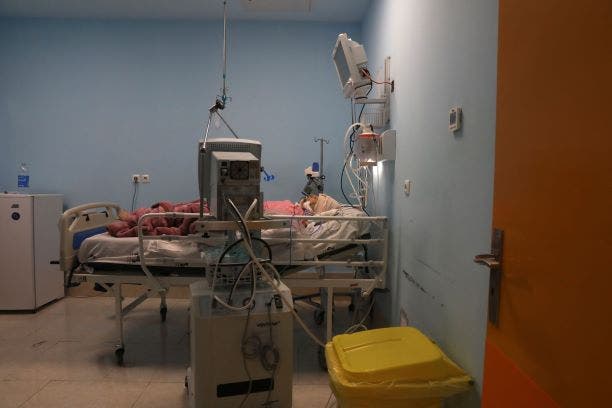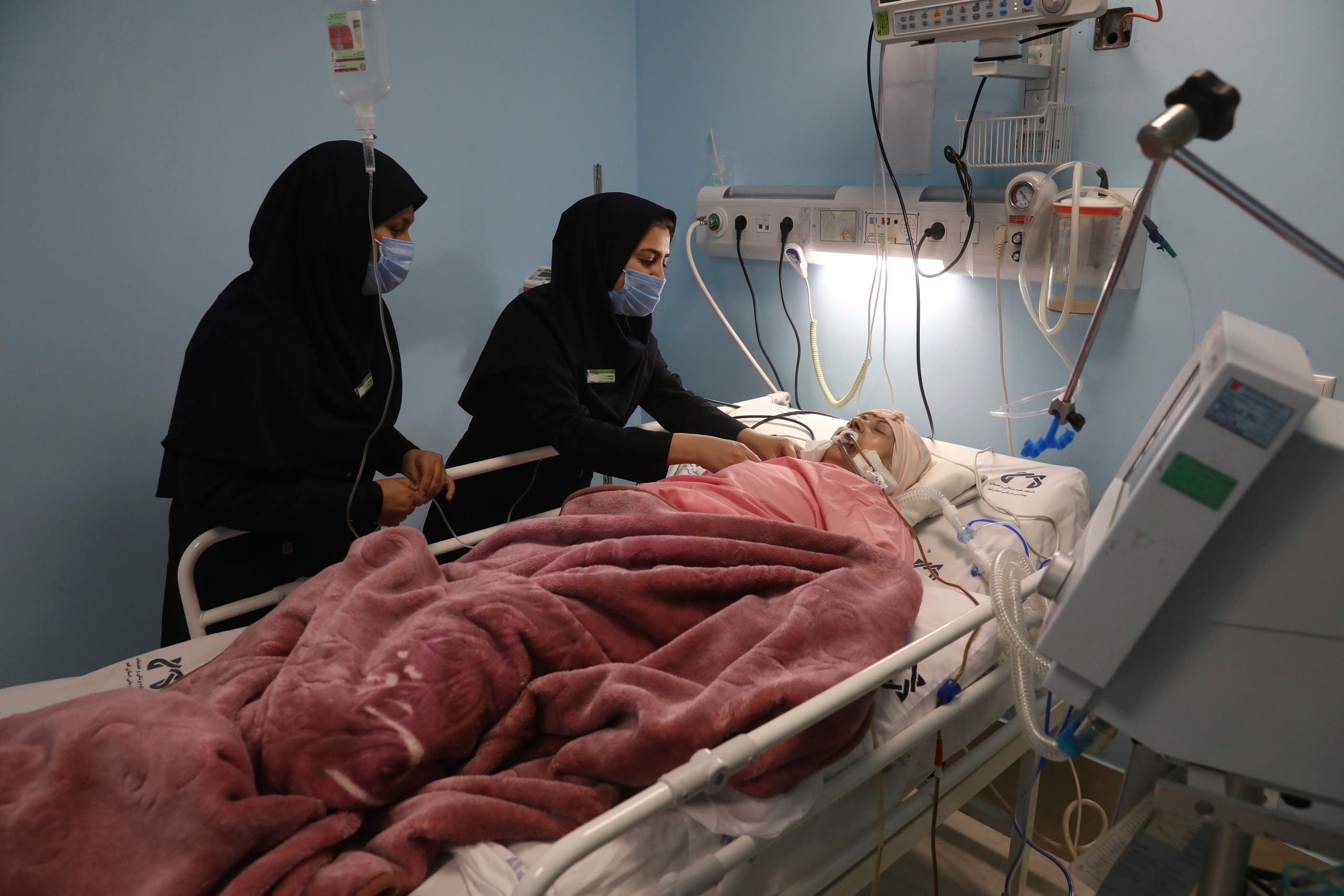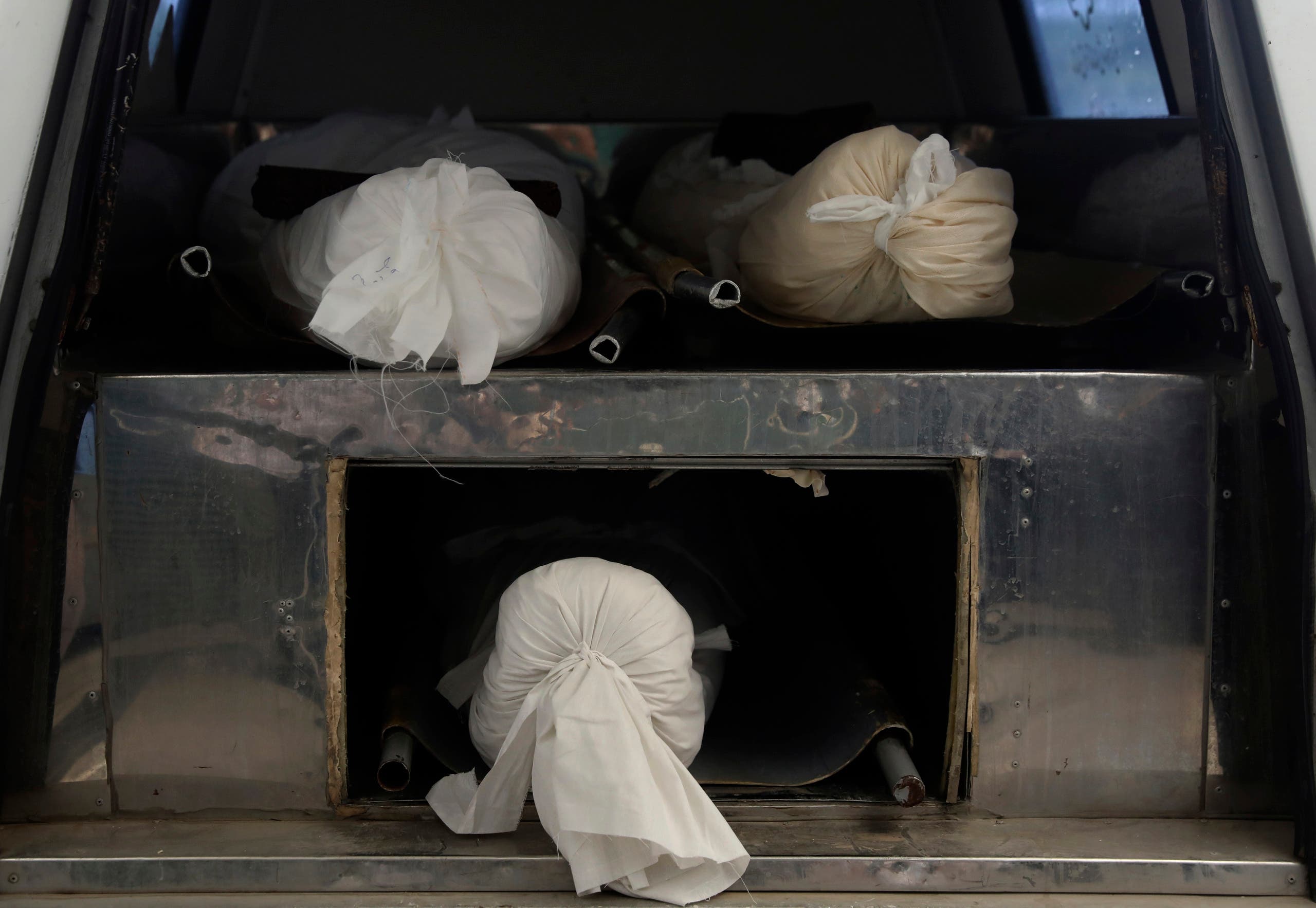AL-Arabia – In Iran’s holy city of Qom, where Shia scholars study and pilgrims travel to a shrine believed to be a gate to heaven, the country’s coronavirus outbreak began and still rages to this day.
For the latest headlines, follow our Google News channel online or via the app.
While Iran works to vaccinate its 80 million people, many in Qom have not sought out the shots, authorities say. In one recent week, the city administered only 17,000 shots daily out of its capacity of 30,000, provincial health department chief Mohammad Reza Qadir said.

Covid-19 patient Marhamat Asadi, who is in a medically induced coma, lies on the bed at the COVID-19 ICU ward of Amir Al-Momenin hospital in the city of Qom, some 80 miles (125 kilometers) south of the capital Tehran, Iran, Wednesday, Sept. 15, 2021. (AP)
One reason for that is a hesitancy by some based on religion. In the outbreak’s first days, religious leaders were reluctant to close shrines and holy sites despite the risks of virus transmission in crowded and inadequately ventilated spaces.
Some sites briefly closed but they later reopened and remained available through repeated, battering phases of the pandemic. Overall across Iran — the Middle Eastern country hardest hit by the pandemic — there have been 5.5 million confirmed virus infections. More than 119,000 people have died, putting tremendous pressure on cemeteries across the country. Officials acknowledge the toll is likely far higher.

COVID-19 patient Marhamat Asadi, who is in a medically induced coma, is tended by nurses Fatemeh Najmeh Sadeghi, left, and Fereshteh Babakhanlou, at the COVID-19 ICU ward of Amir Al-Momenin hospital in the city of Qom, some 80 miles (125 kilometers) south of the capital Tehran, Iran, Wednesday, Sept. 15, 2021. (AP)
Qom’s Behesht-e-Masoumeh cemetery is the final resting place of thousands. Each day, families can be seen weeping as they bury their loved ones, wrapped in traditional shrouds. All have dug new gravesites in which they typically bury the dead very deep in the ground.
Many hospitals are filled with victims, some in medically induced comas, even as authorities warn of a possible sixth surge in infections striking the country.

Bodies of a COVID-19 victims are shrouded and prepared to transfer for burial at Behesht-e-Masoumeh cemetery just outside the city of Qom, some 80 miles (125 kilometers) south of the capital Tehran, Iran, Wednesday, Sept. 15, 2021. (AP)
It was in Qom, some 125 kilometers (80 miles) southwest of Tehran, that the coronavirus first took hold in Iran. Authorities suggest it was spread by an Iranian businessman who returned from China, where the virus first appeared in Wuhan province in 2019. Qom’s Shia seminaries draw Chinese students. The city is also is located along a $2.7 billion high-speed train route that a Chinese company is building and near a solar power plant Beijing is helping construct.
But whatever started the pandemic there, the virus still rages.
 Shabtabnews In this dark night, I have lost my way – Arise from a corner, oh you the star of guidance.
Shabtabnews In this dark night, I have lost my way – Arise from a corner, oh you the star of guidance.



